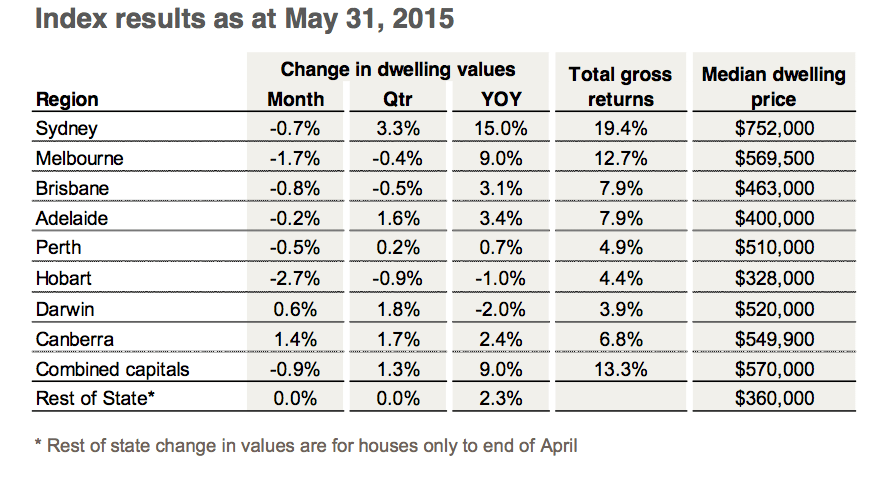Apartment price decline May's most marked trend: CoreLogic RP Data

Is new supply of apartment catching up with demand?
Decline in unit values was the most marked price trend in May, according to CoreLogic RP Data.
There was a 2.8% decline in May for Sydney apartments to a $648,000 median and a 2.5% decline for Melbourne apartments to a $480,000 median.
Melbourne house values are now 9.8% higher over the year compared with a 2.9% rise in unit values.
Every other capital city is seeing a similar, though not as marked, trend with the capital gain for houses recorded at a higher rate compared with the unit market.
“The higher supply levels are likely to be a primary reason why unit values are rising at a much slower pace than house values in Sydney and Melbourne," according to CoreLogic RP Data head of research, Tim Lawless.
"The pace of growth in unit values across Sydney is about half that being recorded across the detached housing sector, with house values up 16.4% (to $880,000) over the year compared with an 8.8% rise in unit values.” Melbourne house median sits at $620,200.
Overall dwelling price growth stalled in May with national dwelling values down 0.9% over the month, Tim Lawless said.
But the weaker reading across the May results is likely to be short-lived, he says, noting the May indices results marked the three year anniversary for the current growth cycle which commenced at the end of May 2012.
Since that time, Mr Lawless noted that capital city dwelling values have increased by 24.2% with Sydney values rising a significant 39.3 per cent since values bottomed out in May 2012.
Melbourne dwelling values have seen the second highest rate of growth over the current cycle, increasing by 22.4% while in Darwin, values are 18.3% higher.
Perth values are up 13.2% followed by Brisbane at 10.6%, Adelaide at 9.9%, Canberra with a growth rate of 8.3% over the cycle, and Hobart where values are 7.7% higher over the cycle to date.
Highlights over the three months to May 2015
- Best performing capital city: Sydney +3.3%
- Weakest performing capital city: Hobart -0.9%
- Highest rental yields: Darwin houses with gross rental yield of 5.6% and Darwin Units at 5.8%
- Lowest rental yields: Melbourne houses with gross rental yield of 3.2% and Melbourne units at 4.3%
- Most expensive city: Sydney with a median dwelling price of $752,000
- Most affordable city: Hobart with a median dwelling price of $328,000
Capital city rental yields remained steady over the month with the typical capital city rental dwelling attracting a gross yield of 3.7%, however yields have compressed substantially over the growth cycle to date.
“Over the past three years, dwelling values have risen more than three times as fast as rents," Tim Lawless said.
"Dwelling values are 24.2%higher across the combined capitals over the past three years while weekly rents have risen by only 7.2%.
"The net result is that gross rental yields have been compressed from 4.3% back in 2012 to the current average gross yield of 3.7% across the combined capital city index,” he said.
Rental yields are currently the lowest in Melbourne - a typical house is returning a gross yield of 3.2% while units are providing a higher gross yield, averaging 4.3%. Sydney follows closely behind, recording a gross yield of 3.4% for houses and 4.5% for units.
“If the current trend continues, it won’t be long before Sydney overtakes Melbourne as the lowest yielding city," Tim Lawless said.
"Sydney yields have slipped by 41 basis points over the past twelve months compared with Melbourne where the gross rental yield is 22 basis points lower.”
“Clearly, investors are not bothered by the low rental yields that are currently available with housing finance data showing investors comprise a record 51 of the value of new home loan originations, “ Mr Lawless said.

